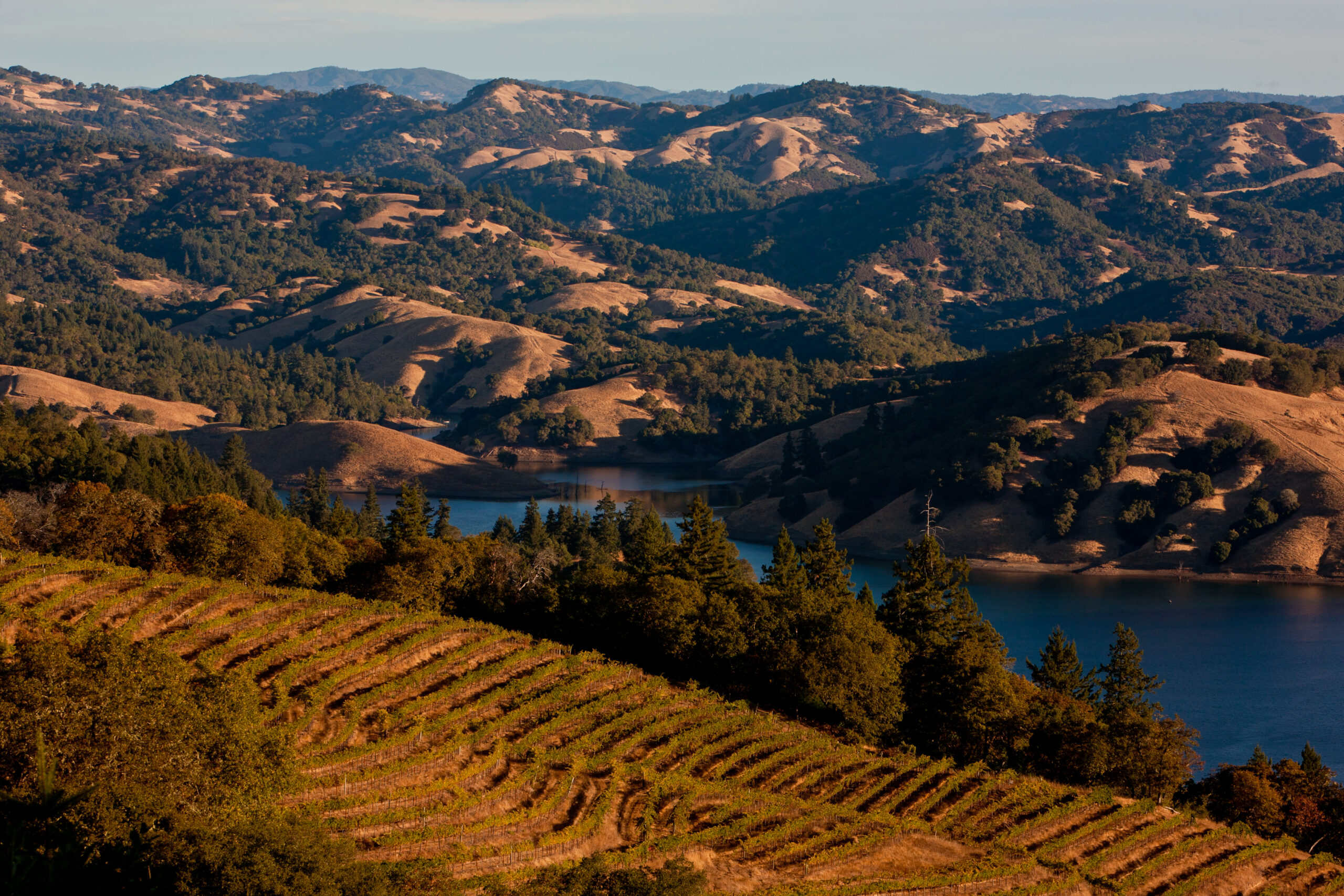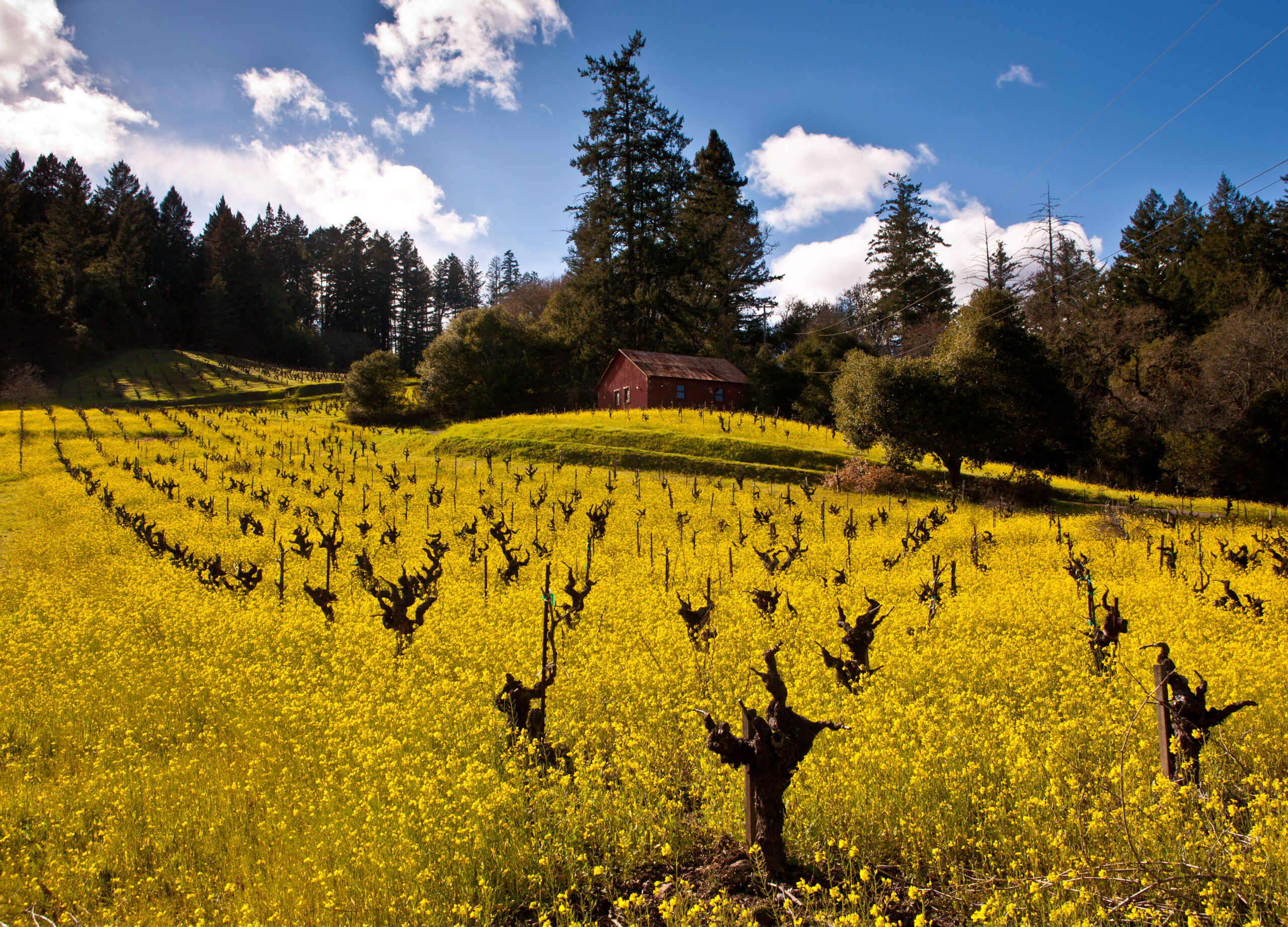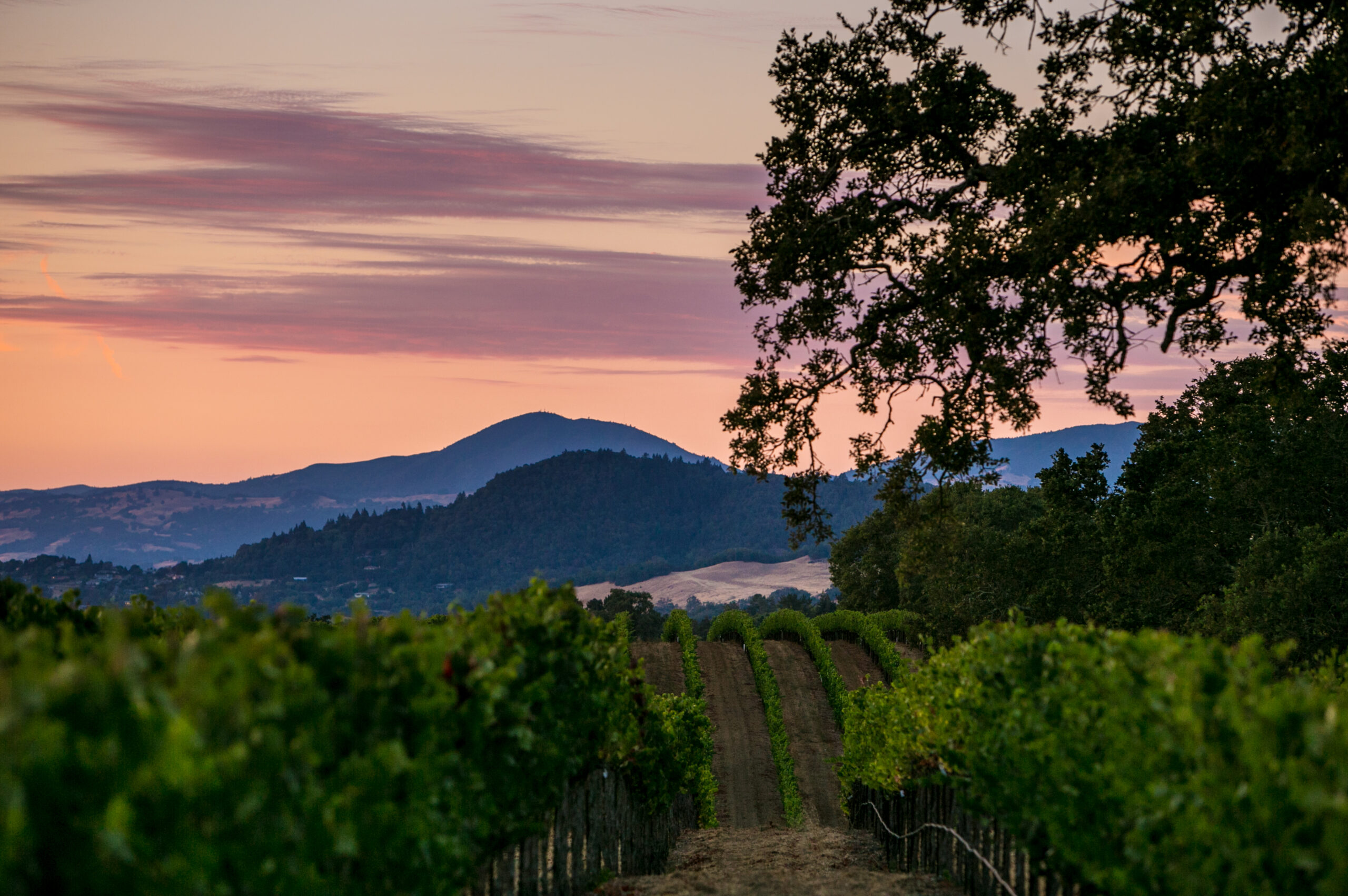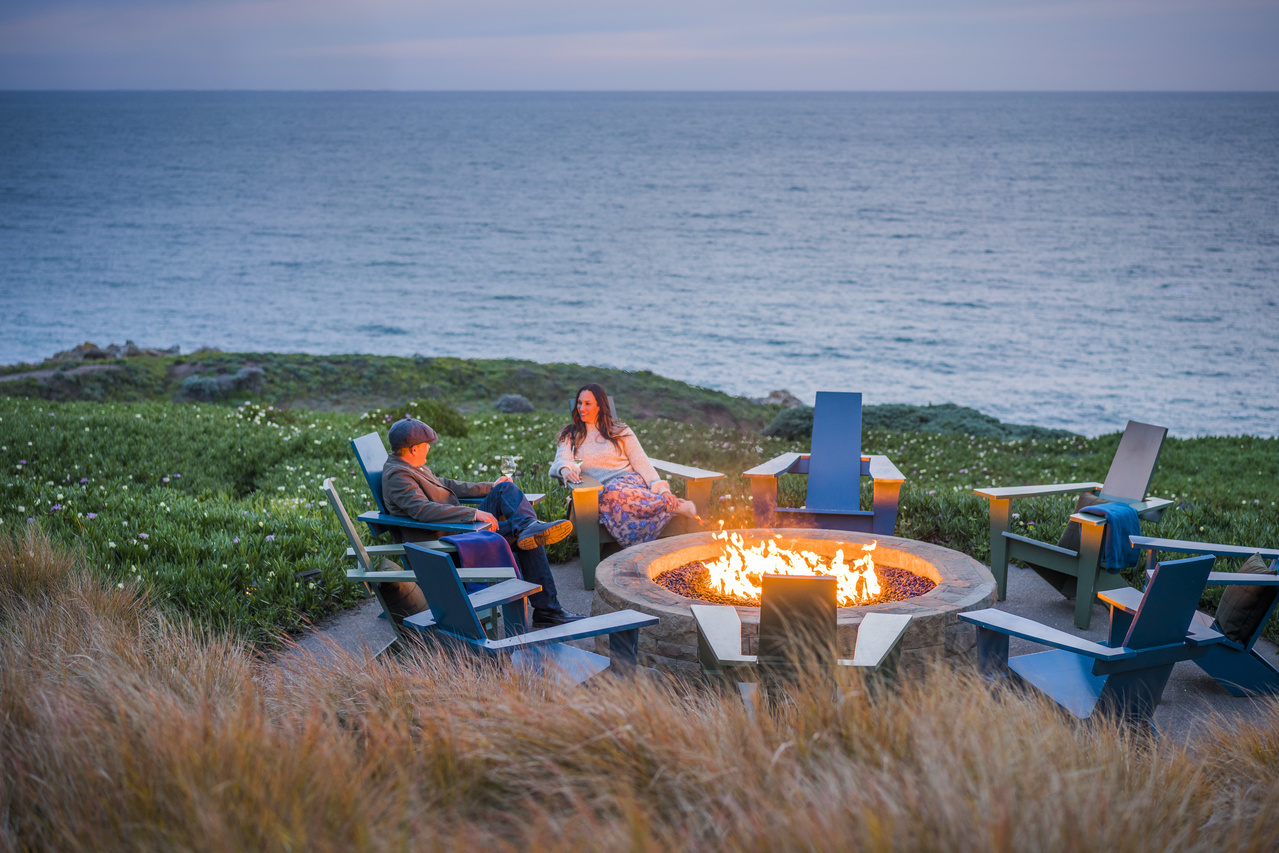The Wine Lovers Guide to Sonoma Wine Country
If you're ready to plan a visit to Sonoma wine country but need a little help, our guide has you covered. Read on to learn more. Photo by George Rose for Sonoma County Vintners.

If you're ready to plan a visit to Sonoma wine country but need a little help, our guide has you covered. Read on to learn more. Photo by George Rose for Sonoma County Vintners.

Megan Cline of Cline Family Cellars says Sonoma is unique and “almost like a country.” While we agree, we’d go one step further and say it’s like a mini California. That’s because you have so much of what makes California iconic, from the rugged seashore and Coastal redwoods to locally-owned farms and world-class wine.
We’re sure you’ve had wines from Sonoma, but how much do you know about this California wine region? It’s often lumped together with Napa since they are both in California’s North Coast region, both a popular day trip from San Francisco and are home to world-renowned wines. But Sonoma is an animal with unique topography, history and wines.
Sonoma is one of California’s largest counties, it is also one of the most historic, having a history of grape growing dating back to the late 1800s. And, thanks to all that diversity of terroir, they farm more grapes in much more varied conditions.
Here we’ll get into the history of wine in Sonoma and a bit about the region’s AVAs (American Viticultural Areas) and, of course, where to taste wine.

This region is unique because of its geographic diversity and rich soils (mostly volcanic and quartz). Just an hour’s drive north of the Golden Gate Bridge, this region is far from the bustle of San Francisco. The county is sandwiched between the Pacific Coast and Napa Valley and has a bit of everything. There are 60 miles of coastline, 2,000-foot mountains soaring, rivers winding through wide valleys, open spaces, redwood forests, and rolling hills.
So, when you talk about Sonoma County wine, you need to understand where it grew, whether along the foggy coast, on the arid hills or the temperate Petaluma Gap.
Before we discuss wine in Sonoma, let’s back up a second and take an eagle’s eye view. Sonoma is a very agriculturally-focused county and wine growing is just one piece of that. The region was historically known for dairy production, sheep farming and local produce like the Gravenstein Apple. Sonoma is still known for agricultural products like quality cheeses, top-notch olive oil and renowned wines.
The history of wine started when Russian colonists planted wine grapes on the Sonoma Coast in 1812. A decade later, the first attempt at fine wine in California occurred when Franciscan monks planted vines at the Missions San Francisco de Solano. Then, in 1857, Hungarian Count Agoston Haraszthy (nicknamed “The Father of California Wine Industry”) founded Buena Vista winery.
By the 1980s, the area became known to produce dairy, grain and fruit crops, including wine grapes. In the late 1980s, grapes were Sonoma County’s top revenue-generating agricultural crop and still are today.

Today almost 60,000 acres across Sonoma are planted to wine, 99% of which is Certified California Sustainable. While more than 60 grape varieties are grown in Sonoma County, Cabernet Sauvignon, Chardonnay and Pinot Noir are the top grapes.
To help make sense of the region’s differences, the county started an appellation system in the 1980s that is the basis for what exists now. Today you’ll find over 400 wineries in the following 19 American Viticultural Areas (AVAs). Keep in mind, many Sonoma County wineries produce wines from multiple AVAs:
Alexander Valley
Named after Cyrus Alexander, it was first planted in the 19th century by the Italian Swiss Colony agriculture co-op. This region follows the Russian River and extends south to Healdsburg, one of the region’s warmer parts. It’s best known for Cabernet Sauvignon, but you’ll also find a lot of Merlot, Chardonnay, Sauvignon Blanc, and old-vine Zinfandel.
Bennett Valley
Though it was only established in 2003 as an AVA, this region was first planted with vines in 1862 by Isaac DeTurk, who bought the land from valley namesake James Bennett. After Prohibition, the wine didn’t return until the 1970s. This AVA is on high land between Sonoma and Cotati Valleys and is notoriously cool because of its proximity to the Petaluma Gap. Today there are 650 acres planted for wine, most of which are Merlot, Chardonnay and Cabernet Sauvignon.
Los Carneros
Spanish for “the rams,” this AVAs name is a nod to the land formerly having been dairy and sheep ranches. This AVA is north of San Pablo Bay and straddles Sonoma and Napa counties.
It became an AVA in 1983, with over 8,000 acres planted for grapes and more than 20 wineries. The morning fog and the cooling effect of the bay mean this area is best suited to Pinot Noir and Chardonnay and is home to some of the best Sonoma sparkling wine.
Chalk Hill
Carved out of the Russian River AVA, Chalk Hill is just north of Windsor. It’s named for the chalky soil and has 14,000 acres but is only home to 5 wineries. Technically a sub-appellation of the Russian River Valley is warmer and sunnier
Dry Creek Valley
Established as an AVA in 1983, Dry Creek Valley is between Healdsburg, the Alexander Valley and Lake Sonoma. In the 19th century, Italian immigrants planted and dry-farmed Zinfandel in the area, which still dominates today (along with Cabernet Sauvignon).
Fort Ross-Seaview
Best known as the spot where Sonoma County’s first winegrapes were planted in 1812, this area is just north of Jenner and above the Fort Ross State Historic Park. The AVA was approved in 2012 and is home to some of the most high-profile Sonoma Coast pioneers. This area is dramatic— with high coastal mountains set near the coast — and major variations in daytime temperatures from the triple digits to the cooler, foggy coast.
Fountaingrove
Created in 2015 as Sonoma County’s 17th AVAa, Fountaingrove has 500 acres of vineyards and five producers. This is the Goldilocks of Sonoma County AVAs, as it has more marine influence than Alexander Valley but is warmer than the Russian River Valley. Historically, the area has been planted with Zinfandel and Pinot Noir, but now grows Cabernet Sauvignon, Chardonnay and Sauvignon Blanc.
Green Valley of Russian River Valley
Established as an AVA in 1983, this is a cool climate AVA far enough off the Petaluma Gap that it is not windy. There are 3,600 acres planted, mostly Pinot Noir and Chardonnay making it a premiere location for sparkling wine production.
Knights Valley
Set along the Mayacamas Mountains between Alexander Valley, Chalk Hill and Calistoga, this area is mainly planted in Cabernet Sauvignon, Chardonnay and Syrah.
Moon Mountain District
One of the few AVAs within the Mayacamas Mountain ridge, Moon Mountain extends 2,000 feet above sea level. These south-facing, high elevations with volcanic soil are particularly suited to Syrah, Merlot and Cabernet Sauvignon though you’ll also find Zinfandel, Petit Verdot, and Cabernet Franc.
Northern Sonoma
The second largest AVA after Sonoma Coast, this AVA comprises 329,000 acres. As the name suggests, this AVA is in the northern part of the county and spans Alexander Valley, Dry Creek Valley, and the Russian River Valley. It is bordered on the western side by the Sonoma Coast.
Petaluma Gap
Named after the California Coastal Range gap, this AVA extends from the Pacific Ocean to Sonoma Mountain. This cool-climate area is known for its coastal fog, which makes it consistently cool in the summer and moderates temperatures in the winter.
Pine Mountain Cloverdale Peak
One of the highest (at 2,600 feet) and most remote AVAs in Sonoma, Pine Mountain Cloverdale Peak is located northeast of Cloverdale. A mix of sheep, cattle and olives is among the 230 acres of wine, mostly planted by Cabernet Sauvignon.
Rockpile
The hottest AVA in the county, Rockpile, is above Lake Sonoma and Dry Creek Valley.
Russian River
The most geographically central and the best-known AVA in Sonoma, the Russian River, is often called the region’s heart. There are 15,000 vineyard acres and 70 wineries, mostly planted with Chardonnay, Pinot Noir, and Zinfandel.
Sonoma Coast
Overlapping with Carneros and the Russian River, this large AVA extends along most of Sonoma County’s coast and encompasses half a million acres. Burgundian varieties such as Pinot Noir and Chardonnay do best in this cooler climate.
Sonoma Mountain
This high-elevation AVA is directly across the valley from the Moon Mountain District. And, like Moon Mountain, it has lots of sunshine and rocky soil. It is largely planted with Zinfandel and Cabernet.
Sonoma Valley
Set between the Sonoma Mountains and the Mayacamas Mountains, and south of Sonoma Mountain is Sonoma Valley. This AVA is best known for Chardonnay, which has grown since the 1950s. There are 14,000 vineyard acres and 80 wineries here, including the historic Buena Vista Winery.
West Sonoma Coast
Established in 2022, West Sonoma Coast is the newest AVA in Sonoma County, comprising 50 vineyards. It is located at high elevation along the Pacific coast to the north of Bodega Bay. The area is mainly planted with Pinot Noir, Chardonnay and Syrah.

When it comes to where to stay in Sonoma, you have options. There are chain hotels near the Santa Rosa airport, b&bs tucked into the hills, sprawling resorts with luxe amenities, modern properties and unique boutiques.
As California’s Bay Area’s farm-to-table capital, Sonoma is also about food. Local restaurants largely center around produce-focused menus and local food. Across the region, you’ll find everything from Italian delis to chic izakayas and classic diners to Michelin meals. Not to mention that many wineries have restaurants on-site or provide abundant food and wine pairing.
Ready to visit Sonoma and taste these wines for yourself? Most of Sonoma’s wineries are open to the public for wine tasting. You can contact the wineries through a booking site like Tock, follow the Sonoma Wine Road, or book one of Sonoma’s numerous wine tours. To best understand Sonoma County wine, plan on at least three full days to see various AVAs. Or, if you can’t make it to Sonoma yet, head to your favorite local wine shop and buy California wine!
